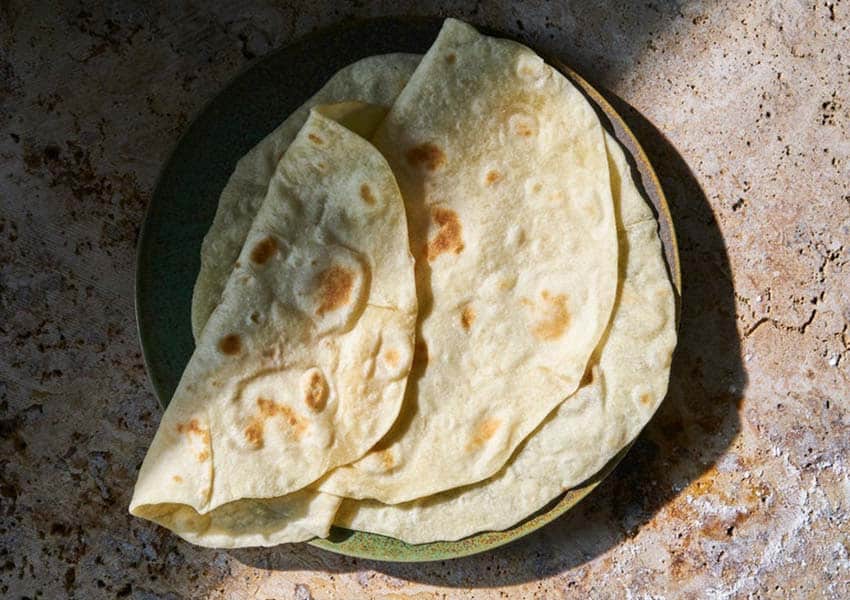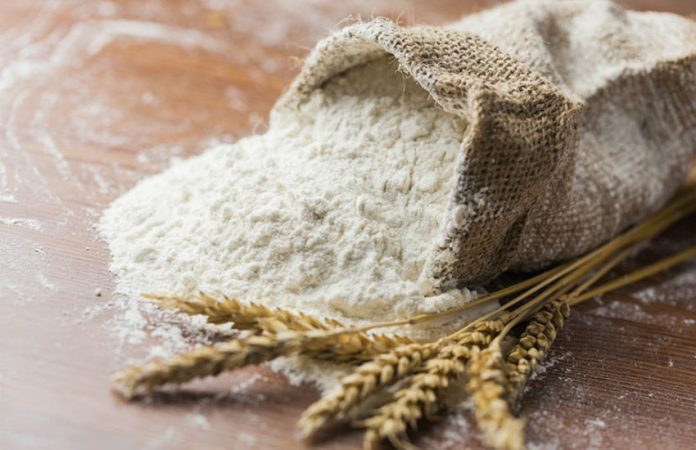Bakers, this column’s for you.
I know you’ve had the same experience as me trying to use the white flour found on Mexico’s grocery shelves to bake and ending up with less-than-satisfactory results. Cakes that rise unevenly, gooey cookies, breads that rise too fast and too much, cutlets that don’t get crisp, soggy, rubbery focaccia. Don’t even get me started on the frustrations of trying to make pizza dough with plain San Antonio or El Rosal harina de trigo.
Chances are you also noticed that Mexican flour has the texture of baby powder — super finely milled — and perhaps were skeptical from the start, as I was. Why was the flour this way? I wondered. And, more importantly — what to do?
I chose to do an end run, turning to Amazon Mexico to find some familiar, high-quality flours from reputable companies like Bob’s Red Mill. But I still wanted to know what was going on with Mexican flour. I’ll try to keep this as simple as possible, so bear with me.
Standard Mexican wheat flour is deliberately milled heavily, resulting in significant “starch damage,” which is exactly what it sounds like. With the kernel starch broken down so much, the flour absorbs more water faster than, say, flour milled in the United States or Canada, where the starch damage can be half as much.
It’s not about the type of wheat (although you’ll find lots of information about hard and winter wheats and protein content, neither of which apply to Mexican flour). Mexican bakers have traditionally preferred this method because baked goods will rise much faster, be airier and absorb liquids quicker than using a flour that forms more gluten. It also allows for bigger batch yields.

Retail bakers call using this type of flour “no-time doughs.”
The more damaged the starch, the easier it is for yeast to break down the sugars during the rising (fermentation) process. But isn’t that a good thing? No — when a yeast dough rises that fast and is so wet, it can’t form the structure you’re looking for. So you can stop blaming yourself for that last batch of sourdough bread rising all over the counter, or all over the fridge if you tried an overnight rise.
What this flour does work for wonderfully, though, are all those soft, fluffy pan dulce and the best tortillas you’ve ever had.
In northernmost Mexican states like Sonora and Chihuahua and in some parts of Sinaloa, flour tortillas are preferred over corn, but in other parts of the country, they can be hard to find. If you make the effort to look for a tortillería with fresh-made flour tortillas, you won’t be sorry!
We’re not talking the packaged ones — they have all sorts of additives and preservatives to extend their shelf life that also affect flavor and texture — but traditional hecho a mano tortillas de harina.
What about imported Italian “Tipo 00” flour? Here in Mazatlán, the little red-and-white or blue-and-white bags have recently appeared in all the big grocery stores. It may have a higher protein content than standard Mexican flour, but it’s the finest milled flour Italy produces, so you’re going to run into the same issues baking with it.

It’s great for pasta and for tender Neapolitan-style pizza crust, although you’ll want to use the recipes on the bags which are specifically for this level of milling.
And finally, a few words about bread flour. This high-protein, more coarsely ground flour makes the best breads and pizzas, as it is able to form the gluten and gas bubbles you want, and the yeast absorbs the sugars slower, making for a chewier, more stretchy bread or crust (this is what I order from Amazon Mexico).
Flour Tortillas
Lard — which many of us recoil from — is no different than bacon fat and is what gives tortillas their subtle, luscious flavor. Resting the dough ensures soft, tender tortillas.
- 2 heaping cups all-purpose flour, plus more for rolling
- 1½ tsp. salt
- 1¼ tsp. baking powder
- Scant ½ cup lard,* melted
- ½ cup plus 2 Tbsp. hot water
- * OK to substitute 6 Tbsp. butter or vegetable shortening, melted
By hand or with a mixer, combine flour, salt and baking powder. Slowly add fat in a thin stream, partly incorporating, then slowly drizzle in water. Mix just until dough comes together; knead for about 2 minutes. Dough will be somewhat wet, webby and shiny.
Place dough in plastic bag; rest at room temperature 2 hours.
With floured hands, divide dough into 12 small, smooth balls. Cover with plastic; rest at room temperature 30 minutes more. Meanwhile, heat griddle or cast-iron skillet over medium-high heat. On A lightly floured surface, roll each ball into an 8-inch circle.
When drops of water dripped onto the pan immediately sputter and evaporate, it’s hot enough. Gently lay tortillas onto griddle. Cook, rotating, for 20–30 seconds per side until lightly golden in spots.
Stack in a resealable plastic bag or clean dish towel to steam, soften and keep warm. Serve immediately or use to make tacos, quesadillas or burritos, etc. Makes 12 tortillas.
Janet Blaser is the author of the best-selling book, Why We Left: An Anthology of American Women Expats, featured on CNBC and MarketWatch. She has lived in Mexico since 2006. You can find her on Facebook.
